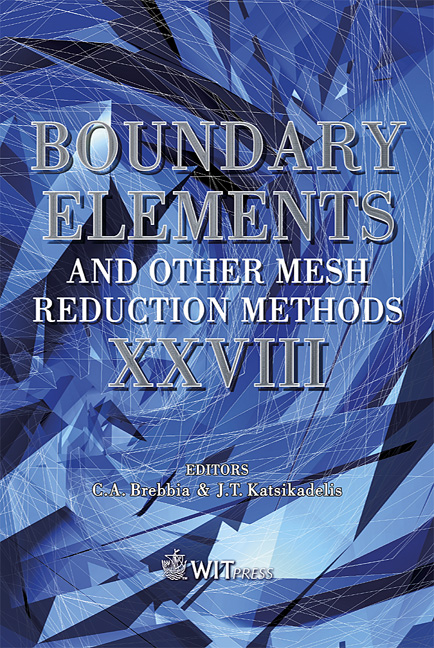A Space-time Boundary Element Method For 3D Elastodynamic Analysis
Price
Free (open access)
Transaction
Volume
42
Pages
10
Published
2006
Size
1,087 kb
Paper DOI
10.2495/BEM060301
Copyright
WIT Press
Author(s)
J. X. Zhou & T. G. Davies
Abstract
The classical BEMapproach for elastodynamics,which employs a finite difference methodology in time (with piece-wise analytic integration in the time domain) and boundary element discretisation in space, can produce poor results for elastodynamic problems where high gradients occur, such as wave fronts. High gradient areas evolve over time and their locations are unknown a priori. Such high gradients can neither be captured by mesh refinement in advance, nor can they be properly approximated by ordinary lower order polynomial shape functions. In this paper,we propose a novel method which interpolates both spatial and temporal domains. A posteriori error estimation formula in space-time is developed to locate the moving wave front. An h- hierarchical adaptive scheme is used to capture the wave fronts accurately and to forestall generation of spurious oscillations there. An numerical examples is given to demonstrate the power and scope of the method. Keywords: time domain BEM, Elastodynamics, error estimation, adaptive mesh refinement. 1 Introduction Since the time domain Boundary Element formulation for elastodynamics and scalar wave propagation was firstly developed (Mansur and Brebbia [1]. Banerjee and Kobayashi [2]), algorithmic has been the major numerical difficulty. To address this problem, various spatial and temporal interpolation schemes have been implemented to improve accuracy and stability, such as combinations of constant, linear and quadratic functions (Dominguez [3], Mansur and Carrer [4]), Bsplines interpolation schemes (Rizos and Karabalis [5]), quadratic time interpolation schemes (Wang and Wang [6]). Other strategies to improve stability include
Keywords
time domain BEM, Elastodynamics, error estimation, adaptive mesh refinement.





